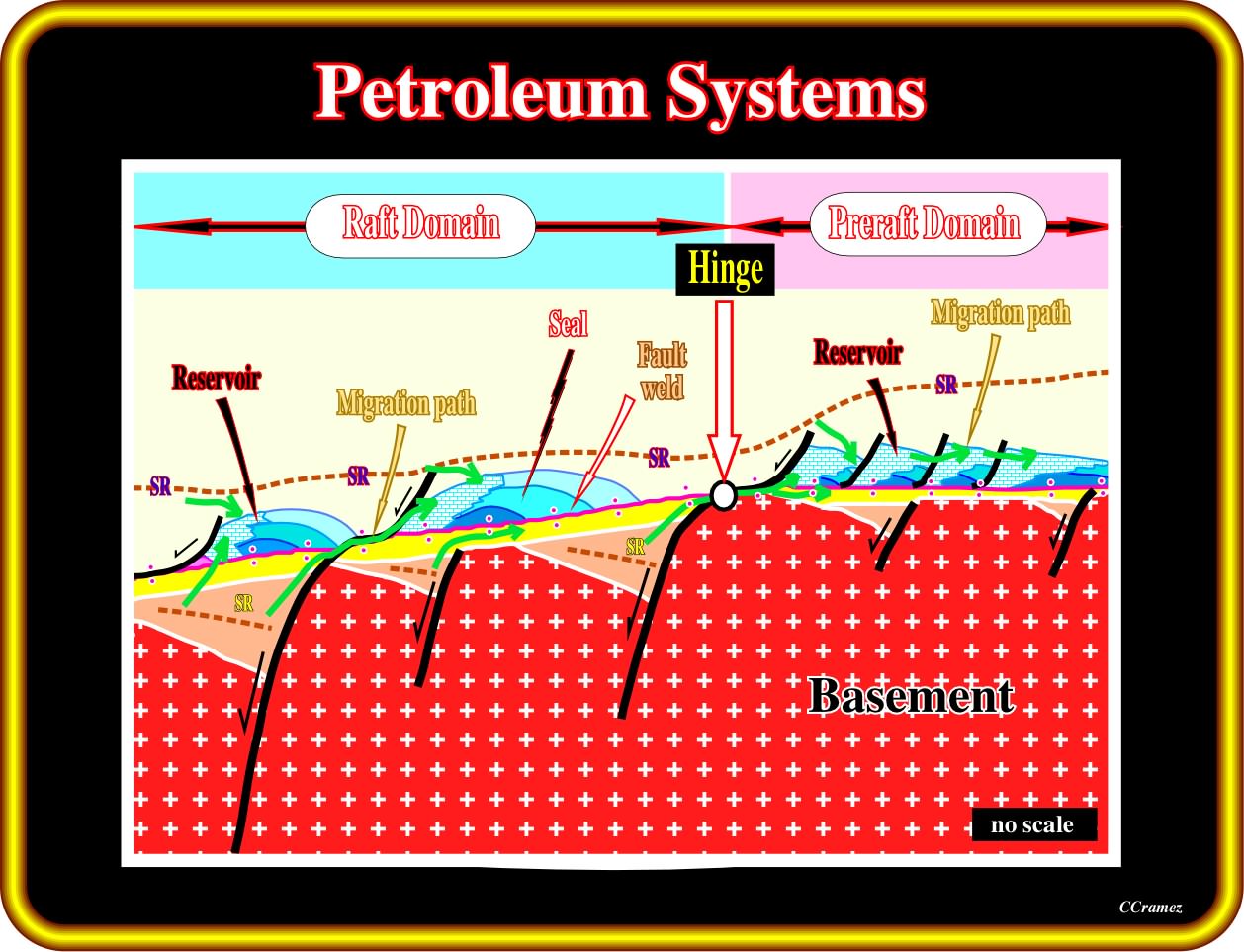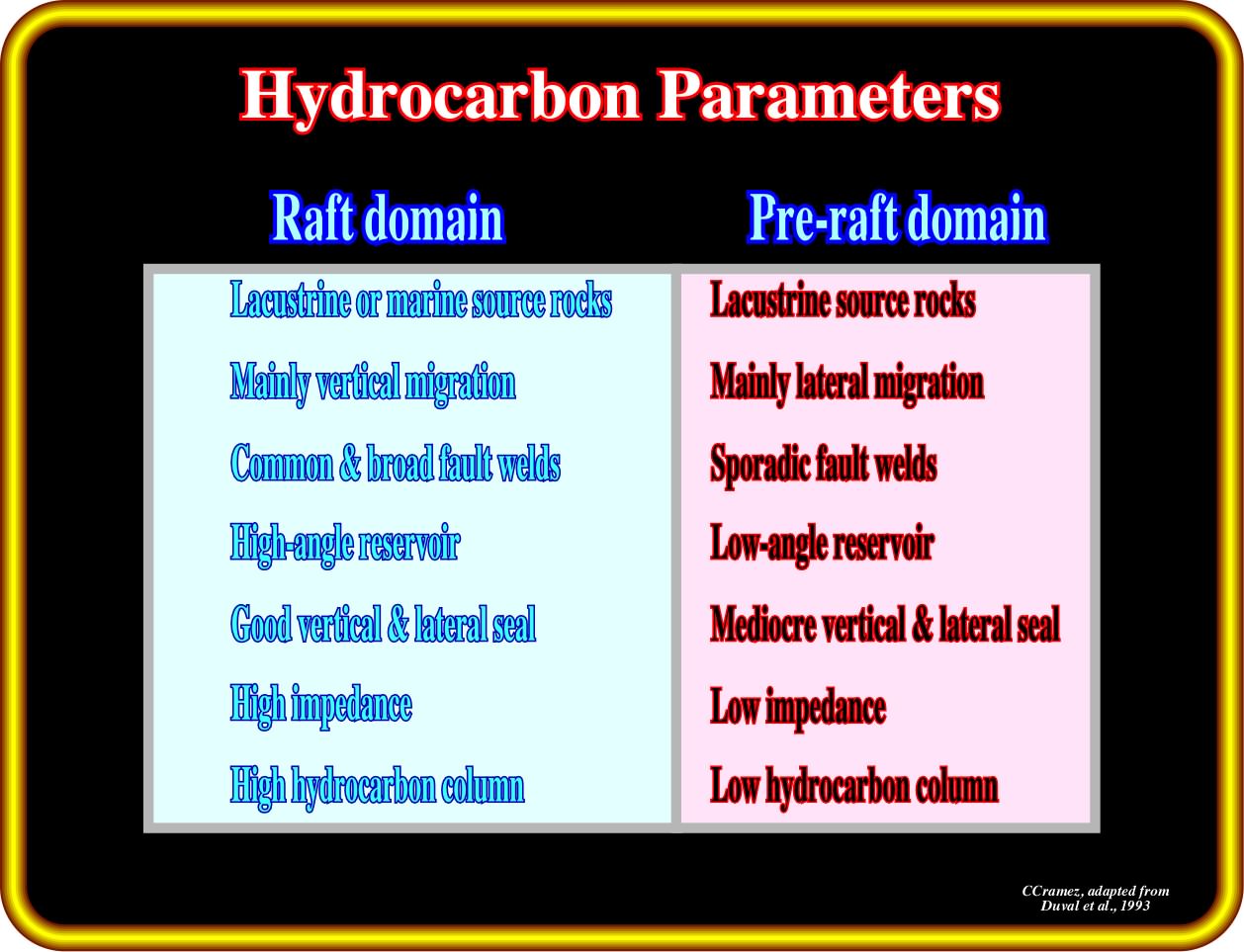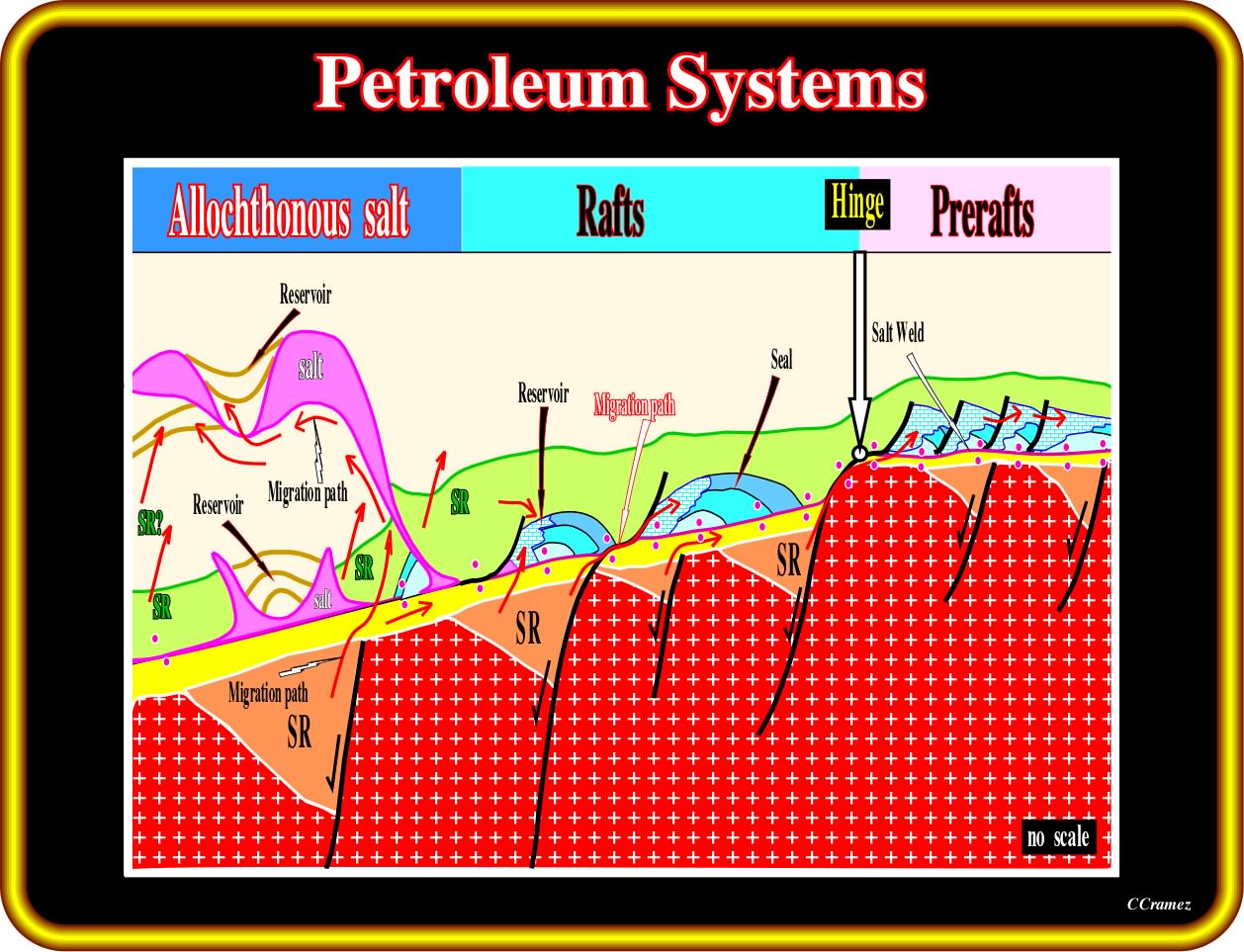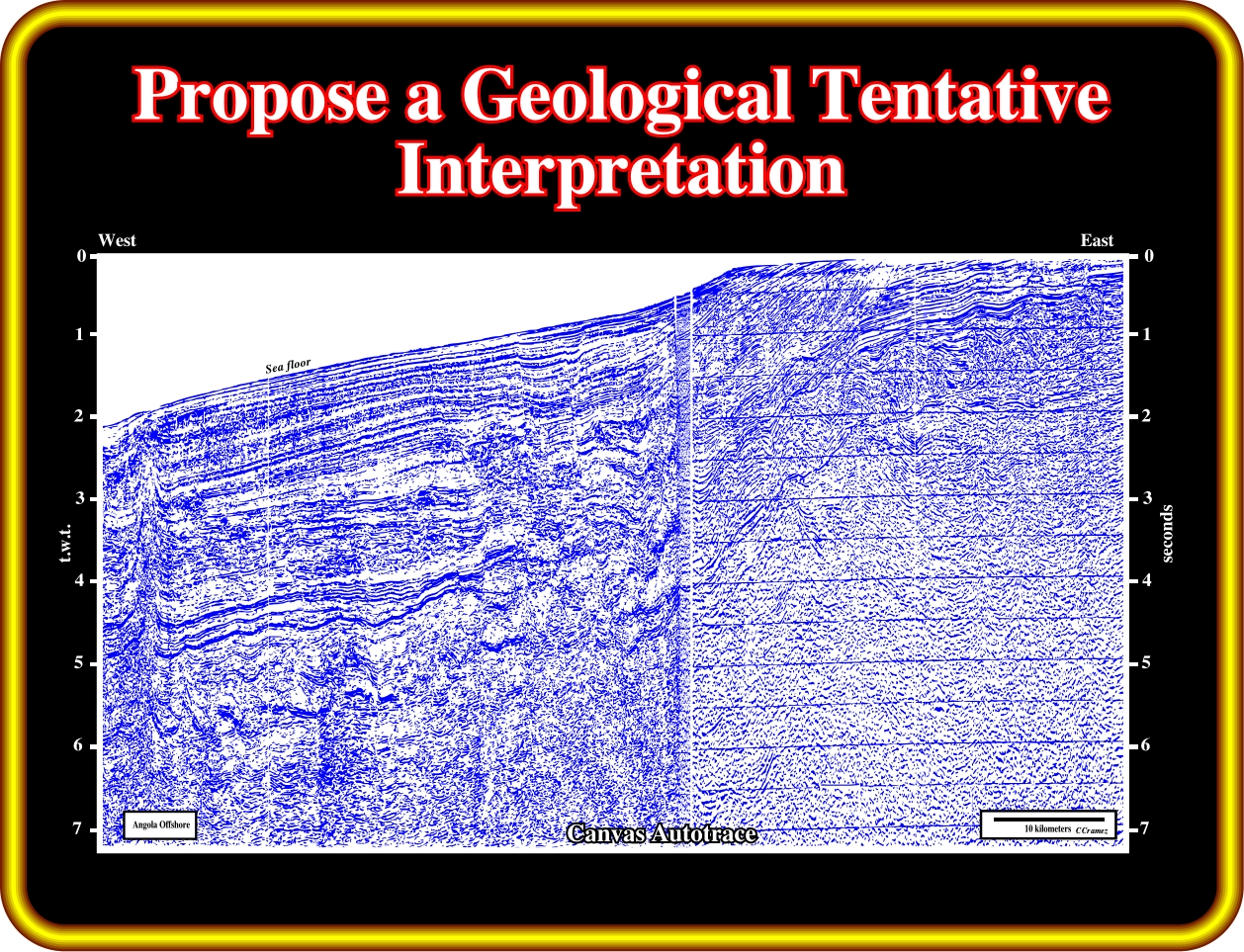

The understanding of rafting and translation, and particularly the limit between the pre-raft and raft domains, has a landmark impact on the comprehension of petroleum systems. On this subject, the northern conventional offshore (northward of the structural high of Ambriz) is a quite interesting example. Indeed, the relationships between the rafting domains and the hydrocarbons parameters, in this area, can be depicted as illustrated in next plate.

This sketch illustrates the hypothesis proposed by Total’s geoscientists to explain the potential petroleum systems, in the northern offshore Angola. In pre-raft domain, they considered the highest structural areas as potential reservoirs, and in the raft domain. Where translation (extension) is paramount, they considered fore-raft structures as potential reservoirs and back-raft structures as potential seals.
Landward of the Atlantic hinge, which separates the pre-raft from the raft domain, the organic matter of the potential source rocks deposited within the rift-type basins, is immature.
a) Actually, even taking into account the general uplift of the proximal offshore and onshore, the organic matter of the potential source rocks has not been buried enough to reach the oil window.
b) In such a geological conditions, the hydrocarbons must have migrated from the rift-type basins located seaward of the Atlantic hinge.
Seaward, on the raft domain, the main petroleum system is Barremian / Albian:
a) The generating petroleum subsystem is composed of lacustrine shales deposited in the rift-type basins (Barremian).
b) The reservoir / entrapment petroleum subsystem is composed by the high-energy Albian limestones, which initially were in a structural high position. After salt flowage and extension, salt induced tectonic inversions put them in a low structural position overlying relic rollers or immediately above the tectonic disharmony.
c- The migration of the generated hydrocarbons is vertical, along the fault planes and then, horizontal, along the basal reservoirs of the margin.
The hydrocarbon parameters have been summarised as illustrated in next plate.

The characteristics of the main hydrocarbon parameters of the Angola northern conventional offshore have been hypothesized since the 80’s, predominantly by Total’s geoscientists. At the present time, taking into account the deep-water exploration, the sketch of the petroleum systems may be adapted, as illustrated as below.

In deep-water, the presence of allochthonous salt layers strongly change the targets of hydrocarbon exploration. The best reservoirs are Tertiary turbidite sandstones and the trapping mechanism can also be associated with allochthonous salt as is the case in deepwater of Gulf of Mexico.
Exercise 1:

Taking into account the hypotheses advanced previously, on this composite line of the northern offshore Angola (South Congo basin), you must recognize :
(i) A Late Tertiary uplift, particularly in the conventional offshore ;
(ii) The tectonic disharmony (bottom of the salt or salt weld) ;
(iii) Pre-raft and raft structures ;
(iv) Tertiary depocenters ;
(v) Fracture zones ;
(vi) Buried steps at the bottom of the salt layer ;
(vii) An apparent downlap surfaces created by translation.
Try to localize the more significant apparent downlap surfaces and you will realize that, at least, one is inverted due to the uplift. Finally, locate the more likely petroleum systems, as well as, the main hydrocarbon parameters.
to continue press
next